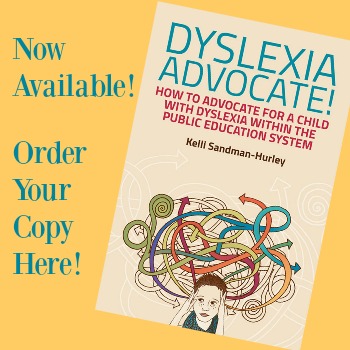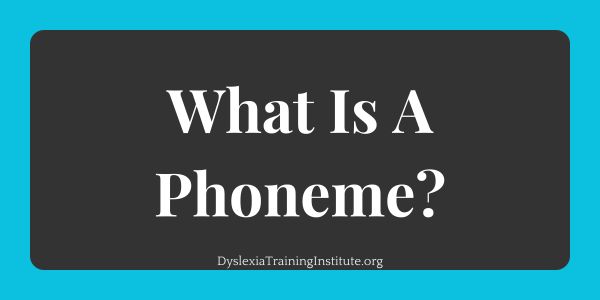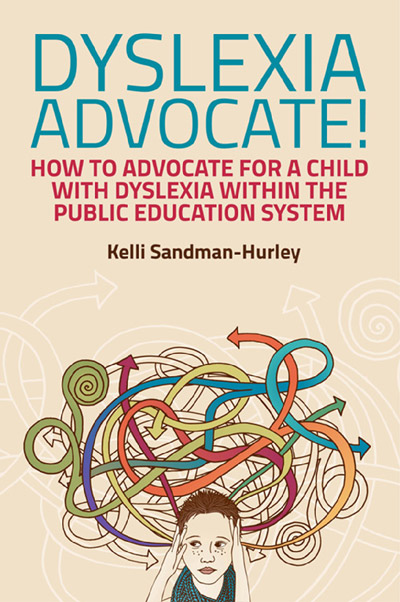
Dyslexia: It’s Okay to Go Off Script
I want to introduce you to Brian, he is my new student. Brian is in the seventh grade and he is reading at about the fourth grade level, his spelling is lower. I think I am about the sixth or seventh tutor he has had in his short academic life. He has had Orton-Gillingham, Lindamood-Bell and everything in between and around the way. To Brian, I am just another person, in a long line of people, who thinks she has the magic cure for him. I know he thinks this, I can just tell by the way he interacts with me during our first session, so I am going off script for Brian. This is something he is not used to and the last time his mom checked in with him, he said “I don’t hate it.” A rousing vote of confidence from an almost thirteen-year-old.
We have met about seven times now and I have yet to pull out a teacher’s guide, a worksheet or any type of manipulative that involve graphemes. Instead we have been talking. Not talking about Fall Ball or skim boarding, but talking about the English language. We have a large white board and dry erase markers. We walk from my desk to the board when we want to investigate a word or an interesting question arises. He is a fidgeter, he likes to kick the bones my dog leaves in the office around while we talk and it doesn’t bother me a bit.
We talk about how the short and long vowel sounds of the grapheme <i> make us move our mouths in different ways and then we test this concept with some words we generate together. We talk about how French affects the way we pronounce some words with a <ch> grapheme and then Greek and Old English and then we make a list of words together and divide them into categories, but we do it together and I let him be wrong until he notices his mistakes on his own, which he invariably does. We talk about the change in the feeling of <th> in words like <the>, <this> and <then> as compared to <thumb> and <theater>. We wrote the word <act> on the board and talked about the phonology change of the <t> when we added the <ion> suffix. Then he wrote on the board other words with <act> and ended up reading <actually> before he even knew that he was reading a word that looks on the surface to be ‘complex’. We talk about why there is a <w> in the word <two> and worked through the word <answer> to determine that it is related to <ante> and <swear> and how it used to mean to swear to something when we answered. We talk about why <where>, <there> and <here> are all spelled with <here>, which is no accident by the way. We talk. We talk a lot and I don’t go through and check boxes during our sessions. Instead I share my passion for our language in a way that helps him understand it. He thinks I am a little word crazy, but that’s okay with me.
The point is that the script is only part of the equation, especially for a student like Brian, who is very suspicious of me, and with good reason. The person working with a student like Brian needs to have enough of an understanding of English to change the tone of the tutoring and still get to the result, which is not only better reading and spelling, but a deeper understanding of his language. A script alone can’t do that.
Download a PDF copy of this article here.






thank you
He”s a fidgeter….and that doesn’t bother me a bit.
That, right there, has been the single best thing our tutor has done. My daughters’s first tutoring experience had lots of “don’t play with your jewelry” and even “leave your glasses on” when her doctor had told her to take them off when she read! Acceptance and meeting someone where they are is powerful. Thanks.
ABSOLUTELY! “….the script is only part of the equation….”, and practitioners need “…to have enough of an understanding of English” to get results.
The public tends to think that effective treatment is about getting a “program” (aka script), but programs and scripts are often inadequate by themselves. What the therapist knows about the structure of the language is another huge part, as Brian’s scenario so clearly depicts. We are so convinced that practitioner knowledge is essential that we require our therapists to pass a challenging qualification exam.
Research suggests there is a third part of the equation, too: adequate, regular practice.
A three legged stool is good analogy. If any leg is missing, short or wobbly the stool (treatment) will be unstable and may even fall over ( won’t work).
With all three elements in place –fast progress is the norm!
Great post, Kelli!
These are lovely ideas for getting through to a child. Sometimes the approach isn’t cookie cutter – tailoring your lessons to each child is essential. Thank you so much for sharing!
Kelli, this is just a beautiful vignette of what a tutoring-tutoree relationship can be.
“I have yet to pull out a teacher’s guide, a worksheet or any type of manipulative that involve graphemes.”
If we stick to a script, how can our instruction possibly respond to the interests and needs of the learner?
“…we make a list of words together and divide them into categories, but we do it together and I let him be wrong until he notices his mistakes on his own, which he invariably does. ”
How much more empowering and generative to be given the opportunity to recognize our misunderstandings ourselves?
It is so moving to see how you have taken your understudying of English orthography and how you bring it alive for your students in such a rich way that is all your own.
Bravo.